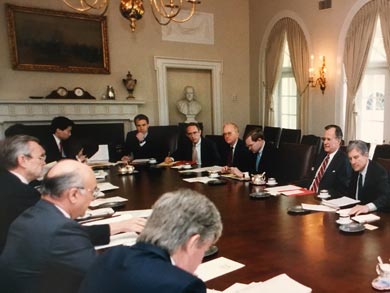

Opened December 1, 2016

The 1980 election of President Ronald Reagan brought a different ethos to the nation about the value of the regulatory state. A pillar of Reagan’s platform was concern about the impact of excessive regulation on business. As he prepared his run for the White House, he stated, “Government is like a baby, an alimentary canal with a big appetite at one end and no sense of responsibility at the other.”1 During the campaign, Reagan advocated requiring that regulators consider the economic cost of the regulation versus the benefit to the economy as a whole before adoption. In order to restore a balance to the economy under the weight of too many rules, he asserted that it was time to regulate the regulators.2
Exactly what “deregulation” meant was in the eye of the beholder. As a campaign theme, regulation was viewed as an unnecessary and costly burden that inhibited business growth. Deregulation could be used as shorthand for those opposing an administrative state which they believed had grown too big. How to achieve smaller government with less regulation would become central to the effort to balance effective regulation with promoting economic growth.
The U.S. Securities and Exchange Commission, among the independent agencies of the Executive Branch, recognized regulation had economic costs. During the 1970s, with the economy impacted by inflation and high interest rates, the SEC had implemented rules to lessen the regulatory burden on the financial industry. The industry now saw additional deregulatory opportunities with President Reagan’s election. In defense of efforts to balance deregulation with the SEC’s statutory duty to protect investors, SEC Commissioner John Evans urged industry representatives “to accept the added responsibilities that go with deregulation and channel your energies into assisting us in our efforts.”3
From 1981 to 2008, a predominantly Republican White House presented the strongest counterweight to the regulatory state since the New Deal. The SEC, both internally and in the face of significant financial industry upheaval, would face its stiffest challenges since its founding.
(2) 1980 Governor Reagan’s Actions and Policies Are Worth Study